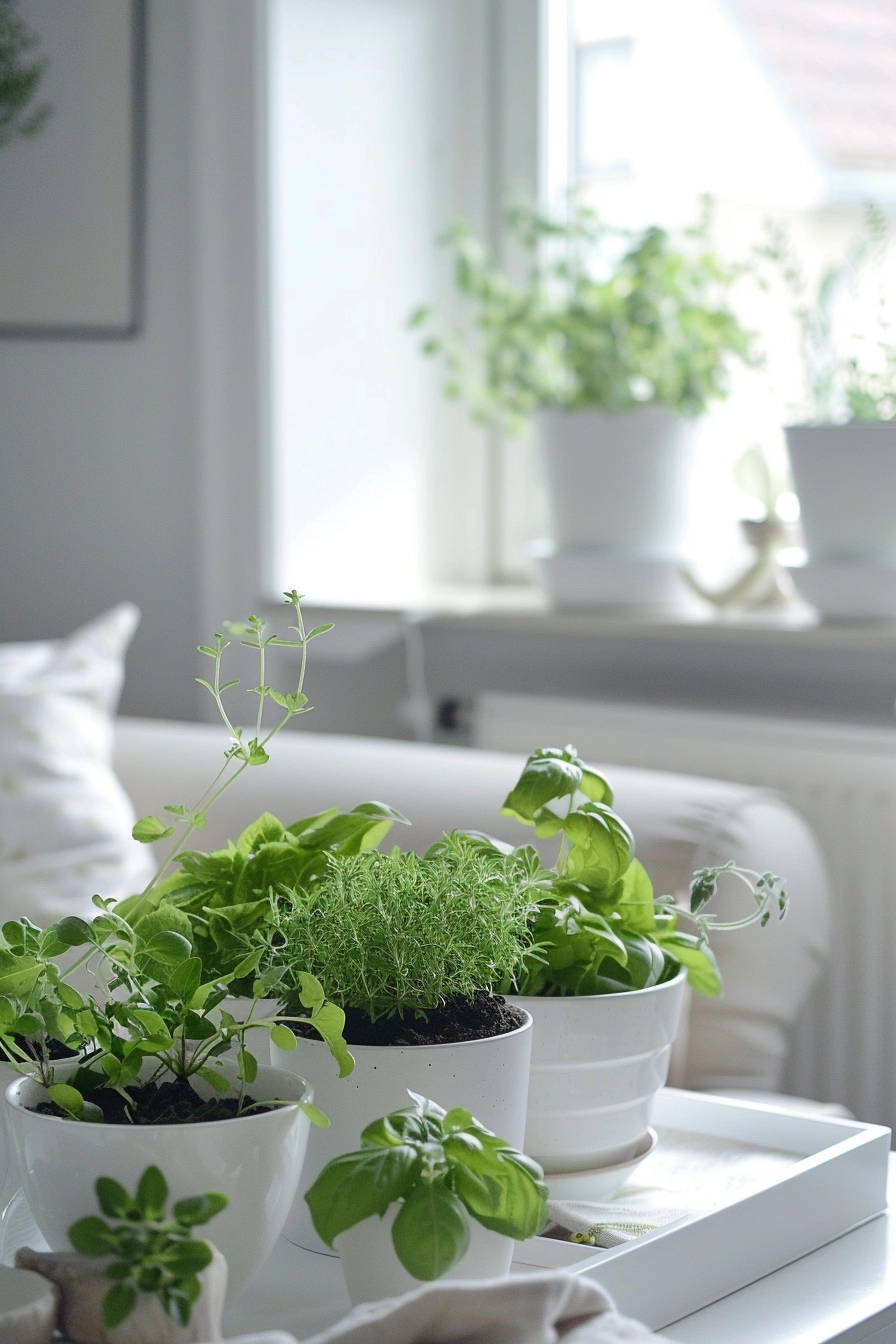Growing your own herbs indoors is a rewarding and convenient way to add fresh flavors to your culinary creations. Whether you have limited outdoor space or simply want to enjoy fresh herbs year-round, an indoor herb garden is the perfect solution. In this article, I will share some valuable tips on how to successfully grow an indoor herb garden and provide you with recommendations for the best herbs to cultivate.
Key Takeaways:
- Herbs require 4 to 6 hours of sunlight daily for optimal growth.
- Some herbs like rosemary, sage, thyme, and basil require more than 6 hours of natural light a day.
- Mint, chives, and lemon balm can tolerate partial sun or shade and are suitable for north- or east-facing windows.
- If natural light is inadequate, you can use artificial grow lights for your herbs.
- Choose containers with drainage holes for proper water management and avoid overwatering your herbs.
Now that we’ve covered the basics, let’s dive into the details of setting up your indoor herb garden and caring for your herbs to ensure a flourishing and bountiful harvest.
Indoor Herb Garden Setup
When it comes to setting up your indoor herb garden, there are a few key factors to consider to ensure the success of your plants. First and foremost, finding the perfect spot for your herbs is essential. They thrive in as much natural light as possible, so it’s best to place them near a well-lit window facing south or where they can receive at least 6 hours of sunlight daily.
If your herbs don’t receive enough light, you may notice signs of poor growth such as long stems between leaf sets, smaller leaves, or pale/yellowing stems or leaves. In such cases, using a grow light can help supplement their light requirements. A grow light provides artificial sunlight and can be on for 12 to 14 hours a day to ensure your herbs receive the necessary light.
Another crucial aspect of indoor herb garden setup is ensuring proper drainage. Choose containers with drainage holes and place saucers or liners underneath to catch excess water. It’s important to avoid letting the roots sit in water as this can lead to root rot and damage the plants.
Pro Tip: Selecting a premium potting mix and fertilizing your herbs regularly will provide them with the necessary nutrients for optimal growth.
When it comes to watering your indoor herbs, it’s essential to keep the soil consistently moist but not waterlogged. Adjust the watering schedule based on the specific needs of your herbs. Check the moisture levels regularly by inserting your finger into the soil. If it feels dry about an inch below the surface, it’s time to water the herbs.
By following these indoor herb garden setup tips, you’ll create an ideal environment for your herbs to thrive. Remember to provide adequate sunlight, ensure good drainage, choose the right potting mix, and maintain a proper watering schedule. Your indoor herb garden will flourish, providing you with fresh herbs right at your fingertips!

Indoor Herb Garden Care
Proper care is the key to maintaining a thriving indoor herb garden. To ensure your herbs stay healthy, it’s important to regularly check the moisture levels of the soil. Overwatering can lead to root rot, while underwatering can cause the leaves to wilt or turn yellow. Use a small watering can or gently drizzle water under the sink to keep the soil consistently moist.
Harvesting your herbs regularly is not only a great way to enjoy their fresh flavors, but it also encourages new growth. Be sure to only remove a few sprigs at a time, avoiding taking more than a quarter of the plant. This helps prevent stress and potential harm to the herb. As your herbs continue to grow, you might need to transplant them into larger pots to provide them with enough space for their roots to spread.
Each herb has its temperature preference, so it’s important to keep them in a suitable environment. Most indoor herbs prefer temperatures between 65 to 70 degrees Fahrenheit during the day. Some herbs, like basil, prefer warmer temperatures, while others can tolerate cooler conditions. By maintaining the right temperature, you’ll help your herbs thrive and flourish.
Lastly, consider using plant food or fertilizers specifically formulated for vegetables and herbs. These products provide the necessary nutrients for optimal growth. With proper care, attention, and the right tools, you can easily cultivate a healthy and flourishing indoor herb garden, bringing fresh flavors and vibrant greenery to your home.


